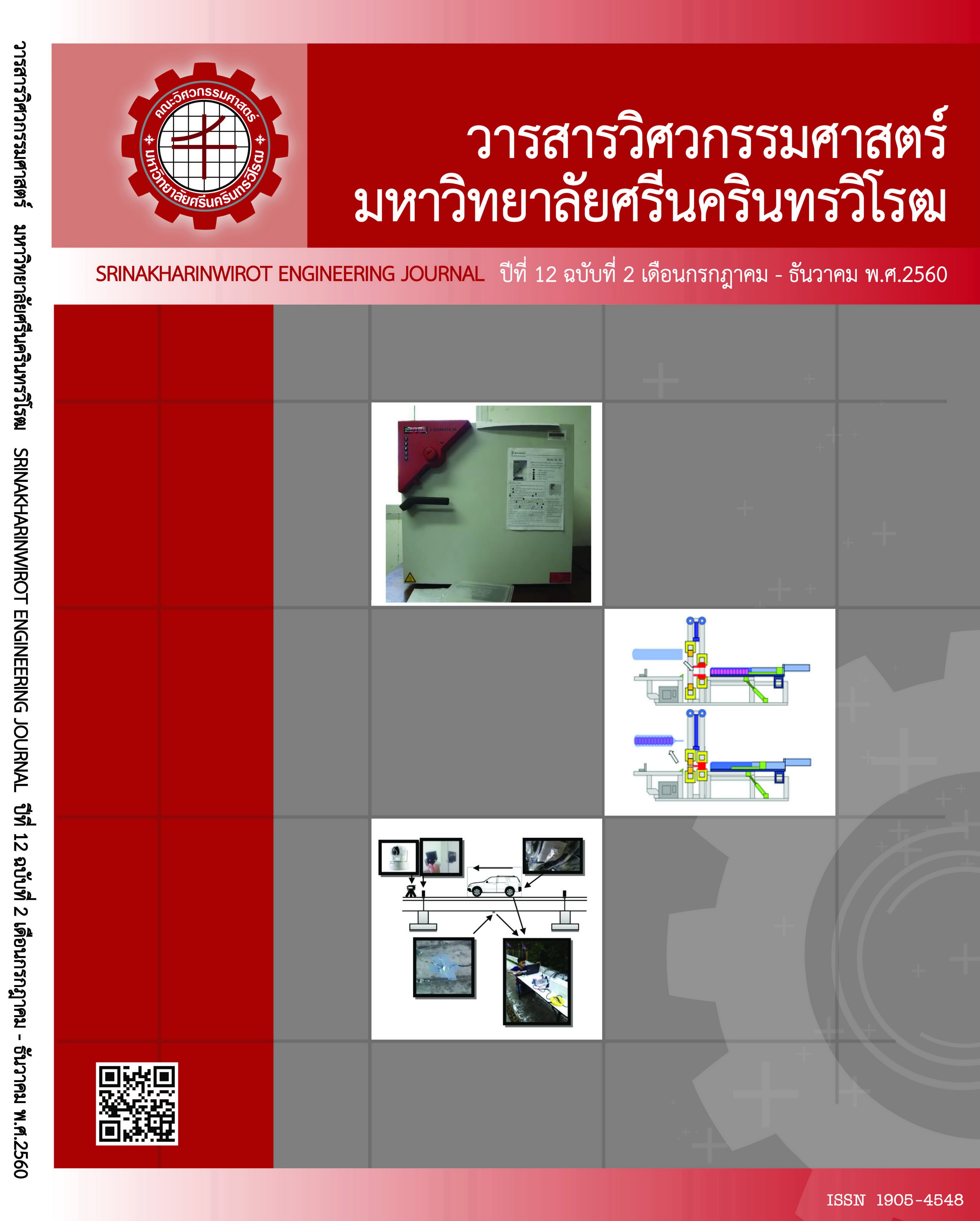The optimization of Biodiesel production from Brassica carinata using ultrasonic irradiation-assisted by response surface methodology
Main Article Content
Abstract
This research presents the production of biodiesel from Brassica carinata oil by using ultrasonic irradiation as a reactor. The potassium hydroxide is a catalyst and 40 Hz 400 W ultrasonic irradiation is applied as a reactor. The Response Surface Methodology (RSM) in conjunction with the central composite design (CCD) was used to design the experimental. The process was carried out in a batch laboratory scale. The experiment setup were 5:1–7:1 of methanol to oil molar ratio, 1–2 wt% of catalyst concentration, 35-45◦C of reaction temperature and 6–12 minute of reaction time. From the result, it is found that the maximum percentage of conversion to biodiesel is 99.71% at 5:1 of methanol to oil molar ratio, 2 wt% of the catalyst concentration, 45◦C of the reaction temperature and 6 minute of the reaction time. The predicted optimum conversion to biodiesel percentage by quadratic polynomial is 99.02% at 5:1 of methanol to oil molar ratio, 1.69 wt% of catalyst concentration, 35 ◦C of reaction temperature and 6 minute of reaction time. This conversion to biodiesel percentage have been verified by the 0.9137 of determination coefficient (R2), 0.8332 of the adjust determination coefficient (Adj. R2) and 0.94% of standard error.
Article Details
Copyright belongs to Srinakharinwirot University Engineering Journal
References
[2] A. S. Badday, A. Z. Abdullah and L. Keat-Teong, “Optimization of biodiesel production process from Jatropha oil using supported heteropolyacid catalyst and assisted by ultrasonic energy,” Renewable Energy, vol. 50, pp. 427-432, 2013.
[3] D. Kumar and G. Easy, “Ethanolysis of coconut oil for biodiesel production assisted by ultrasonication,” Ultrason. Sonachem, vol. 17, pp. 555-559, 2010.
[4] V. Makareviciene and P. Janulis, “Environmental effect of repeseed oil ethyl ester,” Renewable Energy, vol.28, pp. 2395-2403, 2003.
[5] H. Mootabadi, B. Salamatinia, S. Bhatia and A. Z. Abdullah, “Ultrasonic-assited biodiesel production process from palm oil using alkaline earth metal oxides as the heterogeneous catalysts,” Fuel, vol. 89, pp. 1818-1825, 2010.
[6] H. V. Lee and R. Yunus, “Process optimization design for jatropha-based biodiesel production using response surface methodology,” Fuel Processing Technology, vol. 92, pp. 2420-2428, 2011.
[7] K. Noipin and K. Kumar, “Optimization of ethyl ester productions assisted by ultrasonic irradiation,” Ultrasonics sonochemistry, vol. 22, pp. 548-558, 2015.
[8] U. Rashid, F. Anwar and T. M. Ansari, “Optimization of alkaline tranesterification of rice bran oil for biodiesel production using response surface methodology,” Journal of Chemical Technology and Biotechnology, vol. 84, pp. 1364-1370, 2009.
[9] R. Sen, “Response surface optimization of the critical media components for production of surfactin,” J Chem Tcehnol Biot, vol. 68, pp. 263-270, 1997.
[10] B. Salamatinia, H. Mootabadi and S. Bhatia, “Optimization of ultrasonic-assisted heterogeneous biodiesel production from palm oil: A response surface methodology approach,” Fuel Processing Technology, vol. 91, pp. 441-448, 2010.
[11] A. Hanif, G. Partha, S. Ritesh and S. Vijayan, “Ultrasonic biodiesel synthesis from crude Jatropha curcas oil with heterogeneous base catalyst: Mechanistic insight and statistical optimization,” Ultrasonics Sonochemistry, vol. 21, pp. 1050-1064, 2014.
[12] M. Hamed and S. Subhash, “Ultrasonic-assisted biodiesel production process from palm oil using alkaline earth metal oxides as the heterogeneous catalysts,” Fuel, vol. 89, pp. 1818-1825, 2010.


